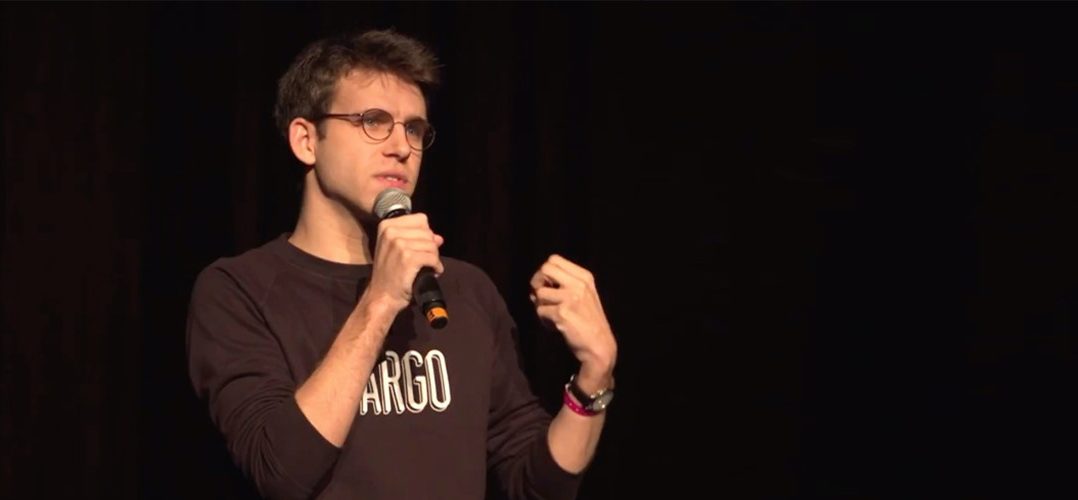In this, the latest in a series of posts ahead of MIPTV 2018’s unprecedented focus on immersive content, we speak to Victor Agulhon, CEO at TARGO, a VR/AR Studio focused on immersive journalism, based in Paris.
MIPBlog: Could you please introduce yourself and tell us what brought you into the VR/AR/immersive space?
Victor Agulhon: I’m the co-founder of TARGO, an immersive journalism studio based in France. We create documentaries and reports using virtual and augmented reality for news media. We work with the New York Times, Al Jazeera, USA Today and France Télévisions on immersive journalism.
I’ve always been passionate about visual technologies and computer vision. There is something fascinating in being able to see technology in action. My first response when I tried virtual reality was to find a way to make these technologies actually useful and accessible to more people.
I turned to a good friend of mine who was a journalist at Mashable France and we started discussing the opportunities of this technology for journalism and media companies. And that’s the story of how we created TARGO, it’s our response to leveraging immersive technologies for journalism!
> What are the biggest challenges VR producers and content creators are currently facing?
First of all, VR is still a nascent industry and challenges around creation, distribution, monetisation and consumption are constantly being solved.
On the creators’ side, most of them have actually been addressed: creating a VR piece is now more about one’s storytelling abilities than technical capabilities. We have more room than ever to be creative in VR: software, cameras and tools have been adapting very quickly to our needs. From our perspective, the real bottleneck lies in how we can distribute our creations.
The biggest challenge today is about distribution channels and addressing a broad audience in virtual reality.
When you look at the market, there is still no VR device that is consumer-friendly. Most headsets still remain impractical, they need to be tethered to a computer or plugged to a phone. To me, it’s the most important condition to see a VR consumer market emerge: make VR headsets more user-friendly.
The great news is that it’s about to change. Most manufacturers have announced the next generation of headsets, autonomous and easy to use. If they actually meet the expectations, I think this is a game-changer. For the first time, VR will have a real consumer device that audiences will potentially use. This is why we are extremely enthusiastic about the next generation of VR headsets.
Then, location-based VR (VR cinema, attractions, arcades…) are booming and it’s sending a very good signal to the industry: it shows that there is consumer interest in VR and that we find ways to make them access high quality content. Distribution of VR contents remains the main challenge and we’re hopeful about the industry solving it: arcades, consumer headsets, platforms are tackling this issue in very pragmatic ways.
> How easy or difficult is it currently to sell immersive content? Do VR/AR entertainment companies have dedicated buyers yet?
We have been selling immersive content for almost two years now and what we see is that it’s accelerating. Most of the media companies that were turning a blind eye to VR are now interested in developing editorial projects in virtual reality.
We are now beyond the it’s-too-early-for-us moment. We’re at a phase when companies, buyers and consumers are familiar with the technology. We do not have to sell the technology anymore, we can focus on our editorial expertise and storytelling approach. It makes a huge difference because the people we talk to want to use the medium for what it allows us to do, not just for the sake of innovation.
Then, how difficult it gets depends on the company we deal with. When we deal with USA Today and the New York Times, they have immersive departments focusing on these topics, they know how it works (the production costs, the workflow, the implementation….) so it tends to be easier than when we work with first-time buyers.
All in all, it’s only a matter of education about the technology and we constantly guide our clients on what we believe is relevant for them. It takes time but it’s we’re going in the right direction.
> Could you share some of the key learnings from your own VR projects?
At TARGO, we create two type of stories, our TARGO originals, and the ones we produce for our clients. We use our originals as our creative lab, we have total freedom and that allows us to explore new techniques and approaches constantly.
At the heart of every project we do, we always wonder why a story is relevant in virtual reality compared to any other format. We combat the VR for VR as much as we can. It comes down to a simple question: should we do it in 2D video? Or should we do it in VR? It means that the editorial component of our stories has to be more important than the technology in itself. From there, we’re really clear about the fact that some projects, stories and documentaries simply don’t belong to VR storytelling.
On the contrary, VR sometimes allow us to find new gateways to a story. We’ve heard about empathy a lot. But it’s far from being the only way to approach a story. Recently, we’ve shot a documentary on people passionate about train modeling. The creative idea was to change the perspective of the viewer: make him feel like he’s at the scale of the model. We had to use miniaturized and modified cameras in order to do it. And it worked! So in the same fashion that VR is not appropriate for some stories, sometimes, it’s the tech that allows us to make it relevant.
More practically, on the way we craft our stories, we are being guided by two main aspects :
First, we’ve realised that most people don’t want to have the freedom to choose what to look at. They want to be guided. We have to pave the way for them and create a path they can follow. We have reached a point where our role as creators is to guide users without constraining them.
Second, we create our experiences having in mind the distribution channel: Is it a headset ? Or is it a 360° video on a screen ? When we’ve chosen, we can use different creative ideas. Our approaches to 360-social and proper VR are radically different…
> What are the three most impressive VR/AR/immersive productions you have seen recently and why?
Recently, I’ve been focusing a lot on augmented reality experiences.
One of the last experiences that struck me in VR was the Inarritu Carne Y Arena hyper reality experience. I tried it recently in Milan and it was very disturbing. Even when you are familiar with VR, creativity always find a way to shake you. This one really makes you feel like you’re there, it was a sort of revival of my first discovery of VR.
When it comes to AR, I’ve come to appreciate simple experiences. Among everything I’ve tried, one of my favorite ones is the New York Times use of AR for the Olympics. They simply made athletes appear in your living room and explained their tricks and movements. The whole experience is very simple but conveys exactly what is needed : a better way to picture something.
The last experience in AR that has felt truly different to me is USA Today – 321 Launch. It’s an interactive experience. You are launching a SpaceX rocket and you’re taught how it works as you go through the different steps of the firing. It’s such a powerful way to discover something.
Finally, I recommend everyone to have a look at the original experiences we produce at TARGO. Every two weeks, we offer an immersive experience to discover unusual worlds: the real ghostbusters, the lone explorer of the South Pole, carrier pigeons races… We always want to bring something new and we make all our experiences widely accessible to the public, through our website, targostories.com.
> Some may fear VR is the new 3D, i.e. that it will never catch on for widespread domestic use. Why do you think it’s here to stay?
One thing I’m sure is that gadgets don’t last and that we have to give audiences reasons to put these headsets on! Will VR headset evolve? Will they become augmented or mixed reality headsets? Probably, and that’s fine.
What I’m sure of is that we are seeing the rise of something new, it’s “first-person content”, a type of content that is meant to be experienced at the first person. A type of content is designed around and for the user, making him either actor or a witness. This is a radically new type of experience, much more compelling, that is here to stay.
As a creator, it is what matters to me. Today, we use virtual reality headsets. If tomorrow, we have to use a mixed reality headset, it’s fine as well. Our work consists in creating the best experiences for this ‘first-person-content’ paradigm, the evolution of the device we use to access them has to come after.
More about Generation Z and immersive content at MIPTV 2018
These posts are produced in partnership with Red5 and VR event Virtuality.




